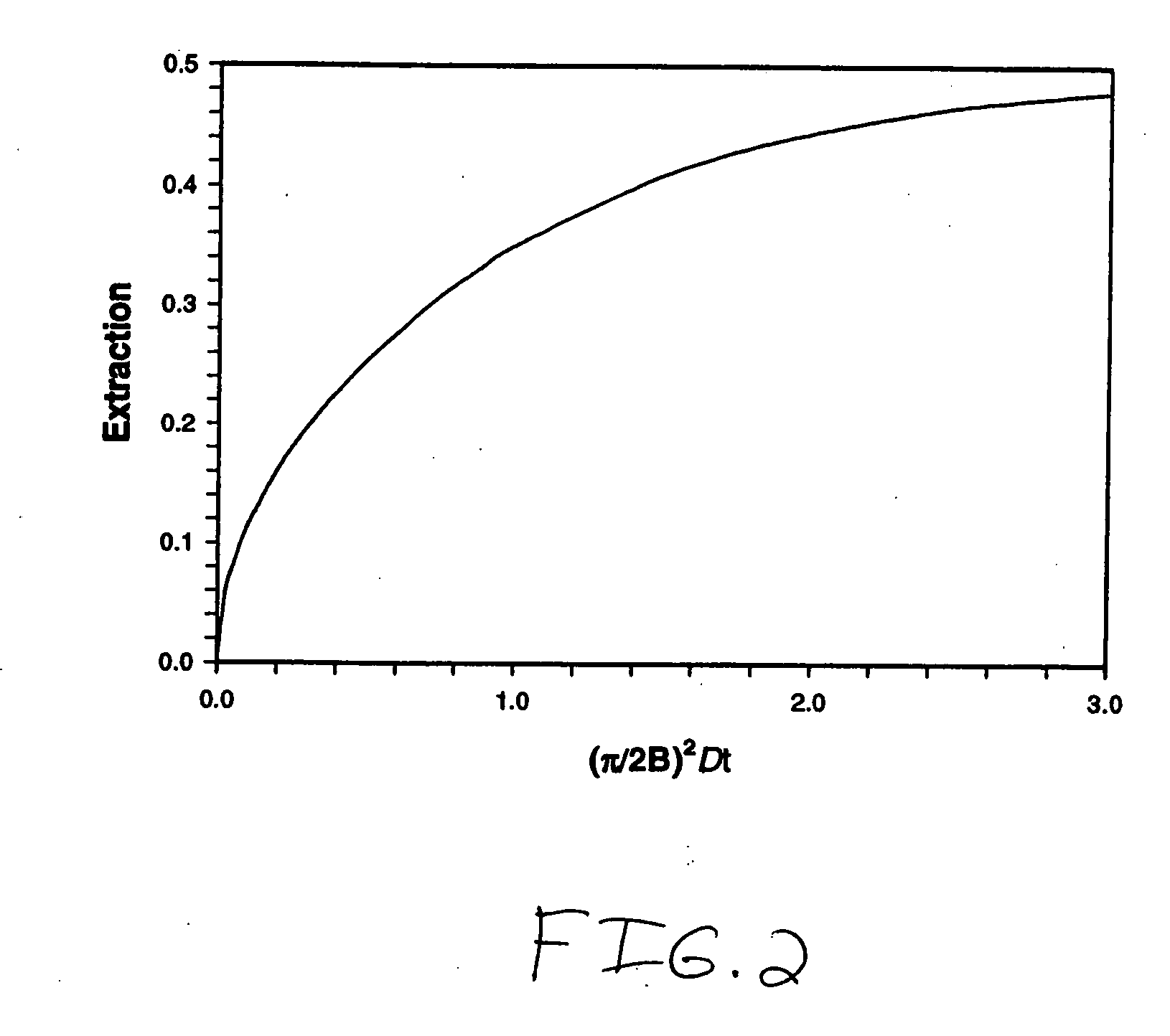Systems and methods of blood-based therapies having a microfluidic membraneless exchange device
a microfluidic membrane and exchange device technology, applied in the field of purification of sample fluids, can solve the problems of complicated prolongation of life, limited use of blood processing techniques employing immiscible liquids, and problems with blood processing, so as to reduce undesirable activation of factors in the blood, prevent or reduce undesirable activation, the effect of minimizing bioincompatibilities
- Summary
- Abstract
- Description
- Claims
- Application Information
AI Technical Summary
Benefits of technology
Problems solved by technology
Method used
Image
Examples
Embodiment Construction
[0033] According to one aspect of the invention, a membraneless exchange device for extracting components from a sample fluid is described which includes first, second and third inlet channels, first, second and third exit channels and a microfluidic extraction channel connected to the first, second and third inlet channels and the first, second and third exit channels, and which includes a flush port. One embodiment of the flush port is depicted in FIG. 12. The flush port is capable of ‘reverse flushing’. In usage of the device of the invention, there may be cells entering the sheath fluid and this is undesirable. If no correction is applied (some method of removing the cells from the sheath fluid, or some method of returning the cells to the blood), it is inevitable that the composition of the sheath fluid, over a long enough period of time, will approach that of blood, thus obviating many if not all of the advantages of the invention. While there are many ways of refreshing the s...
PUM
| Property | Measurement | Unit |
|---|---|---|
| Fraction | aaaaa | aaaaa |
| Fraction | aaaaa | aaaaa |
| Height | aaaaa | aaaaa |
Abstract
Description
Claims
Application Information
 Login to View More
Login to View More - R&D
- Intellectual Property
- Life Sciences
- Materials
- Tech Scout
- Unparalleled Data Quality
- Higher Quality Content
- 60% Fewer Hallucinations
Browse by: Latest US Patents, China's latest patents, Technical Efficacy Thesaurus, Application Domain, Technology Topic, Popular Technical Reports.
© 2025 PatSnap. All rights reserved.Legal|Privacy policy|Modern Slavery Act Transparency Statement|Sitemap|About US| Contact US: help@patsnap.com



